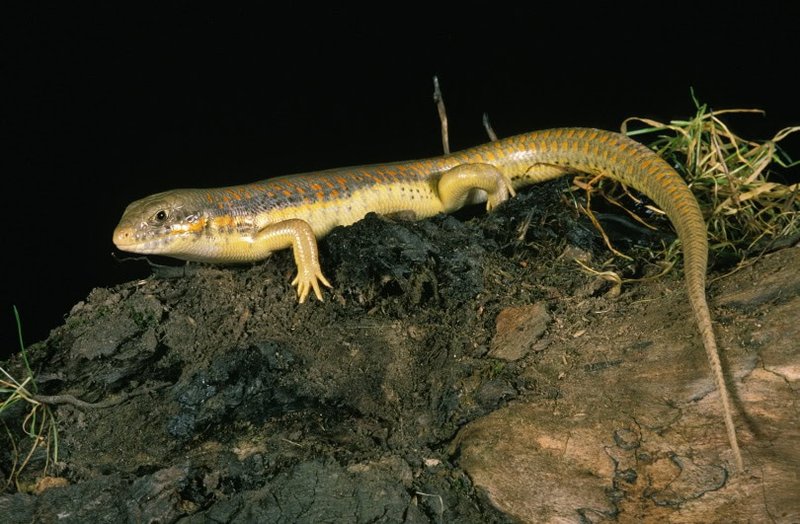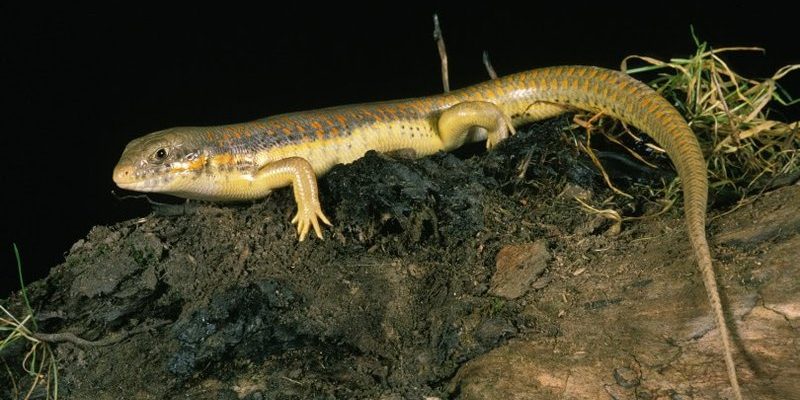
Skinks are fascinating reptiles that belong to the Scincidae family. Found in various habitats all over the world, these creatures are not just pretty to look at; they have unique behaviors and diets that make them truly remarkable. So, let’s dive into the world of skinks and explore what they eat, how they hunt, and some interesting details about these little predators.
Understanding the Skink’s Diet
Skinks are primarily insectivores, meaning they mainly feast on insects. However, their diet can vary depending on the species and their environment. Here are a few things you might find on their dinner plate:
- Insects: This includes beetles, ants, and crickets—basically, anything that wriggles and moves!
- Worms: Many skinks enjoy digging into the soft earth to find worms, which are a great source of protein.
- Fruits and Vegetables: Some skinks, like the Green Anole, sometimes nibble on plant material, adding a bit of variety to their diet.
So, you might be wondering how they find and catch their food. Skinks are equipped with keen eyesight and agile bodies, allowing them to spot prey from a distance and pounce quickly. Whether they are darting over rocks or sneaking through grass, skinks are experts at locating their snacks.
The Hunting Techniques of Skinks
Here’s the thing: skinks are not just your average hunters. They employ a range of techniques to catch their meals. One of their primary methods is camouflage. By blending into their surroundings, they can remain undetected by both prey and predators.
When a skink spots an insect, they often use a quick ambush technique. They’ll watch and wait, keeping still until the perfect moment arrives. Then, they dash out in a blur of motion, catching their meal off guard. This element of surprise is crucial since many of their prey are fast and can easily escape if given the chance.
Another interesting aspect of skink hunting is their social behavior. While some skinks are solitary hunters, others may hunt in pairs or small groups. This teamwork can increase their chances of a successful catch, as they can corner their prey more effectively together. It’s like a little skink squad working together for dinner!
Skink Species: A Variety of Diets
Did you know there are over 1,500 species of skinks? Each species has adapted its eating habits based on its habitat. Some have slightly different diets, and that’s part of what makes skinks so diverse.
For instance, the Blue-Tongued Skink is known to enjoy a more varied diet. It doesn’t just stick to insects; you might find it munching on fruits, leaves, and even small rodents! This flexibility allows them to thrive in different environments, from forests to deserts.
Additionally, the behavior of skinks can change based on their age. Younger skinks might stick primarily to soft-bodied insects like caterpillars, while adults might be more adventurous eaters, going for larger prey or diverse plant matter.
How Skinks Digest Their Food
Once a skink catches its meal, the next step is digestion. Skinks have powerful stomach acids that help break down tough exoskeletons of insects, allowing them to absorb the nutrients they need. This digestive efficiency is crucial for their survival, especially since they need energy for their active lifestyles.
Interestingly, skinks also have a relatively long intestine compared to their body size. This adaptation helps them maximize nutrient absorption, ensuring they get the most out of their meals. Think of it like having a super-efficient kitchen that minimizes waste!
Skink Predators and the Food Chain
Now, while skinks are skilled hunters, they’re also prey for many animals. Birds, snakes, and even some larger mammals see skinks as an easy meal. Understanding their role in the food chain is essential.
The existence of skinks supports a diverse ecosystem, as they help control insect populations. By hunting insects, they maintain a balance within their habitat. So, the next time you see a skink, remember they play a crucial role in keeping nature in check.
Conservation and Threats to Skinks
As with many species, skinks face threats from habitat loss and climate change. Urban development can destroy their natural environments, leading to declining populations. Additionally, the introduction of non-native predators can put pressure on skink species.
Conservation efforts are essential for protecting these unique creatures. Supporting local wildlife initiatives and learning more about their habitats can make a difference. By spreading awareness, we can help ensure that skinks continue to thrive in the wild.
So there you have it! Skinks are more than just cute, scaly creatures; they are skilled hunters with fascinating diets and behaviors. From their stealthy hunting techniques to their diverse eating habits, these reptiles showcase the wonders of nature in their everyday lives.
Understanding what skinks eat and how they hunt gives us insight into their world and the ecosystems they inhabit. Next time you spot one in your yard or a nearby park, take a moment to appreciate the intricate role they play in our environment. After all, these little guys are not just out there surviving; they’re thriving in their unique ways!

